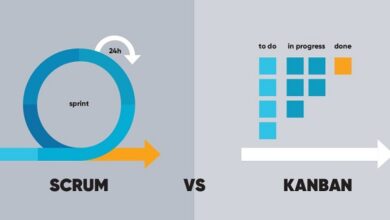Determinants of supply determining factors and examples
The determinants of supply are the different elements that establish the presence of an increase or decrease in the supply of a product by sellers in the market. Therefore, they influence the quantity supplied of a product.
Supply refers to the amount of a product or service that suppliers can offer to the market at different prices over a period of time. Supply is not constant over time, but increases or decreases regularly.
The supply curve shows the amount of a product or service that sellers are willing to deliver at a given price. Whenever there is a change in supply, the supply curve shifts to the left or right, similar to changes in the demand curve.
Increasing supply will cause the supply curve to shift to the right, while decreasing supply will result in a shift to the left.
Supply determinants
The main factors determining the offer are:
Related Products Price
If the price of related goods rises, the seller will increase the supply of the higher-priced goods. This leads to a drop in the supply of lower priced goods.
entry prices
Companies use a certain amount of different materials to produce any kind of good or service. When the prices of these inputs rise, companies will have to face a higher cost of production.
Therefore, producing that good or service will become less profitable and firms will reduce supply, sliding the supply curve to the left. On the other hand, a fall in input prices will reduce production costs, shifting the supply curve to the right.
number of sellers
As more companies enter the market to sell a specific product or service, the supply will increase. This is the supply curve that shifts to the right.
On the other hand, when companies exit the market, supply decreases, that is, the supply curve shifts to the left. While this might seem pretty obvious, it’s an important factor to consider.
Technology
The use of technology in the production process increases productivity, making the production of goods or services more profitable, increasing supply.
It should be considered that the technology in the production process environment will only generate an increase in supply, not a decrease. The reason for this is simply because the new technology will only be adopted if it increases productivity.
Otherwise, vendors will be able to continue with the technology they already have, without affecting their productivity or supply.
Natural and social factors
There will always be a set of natural and social factors that affect supply. They can affect how much production sellers can produce or how much they want to produce.
As a general rule, natural factors influence how much sellers can produce, while social factors have a greater effect on how much they want to produce.
Expectations
It has a strong impact on future price expectations and/or other factors that affect supply. If prices rise in the near future, part of the production will be held back, reducing current supply to increase it when it is more profitable in the future.
taxes and subsidies
Taxes reduce profits. Therefore, increasing taxes reduces supply, while decreasing taxes increases supply.
Subsidies reduce the burden of production costs, increasing profits. Therefore, by awarding it to a producer, he offers a financial incentive to offer more.
Examples of supply determinants
Here are examples of bid drivers:
Related Products Price
Let’s say the price of wheat goes up. This makes it more profitable for companies to supply wheat compared to corn or soybeans. Therefore, the supply of wheat will increase, while the supply of corn and soybeans will decrease.
entry prices
A fast food restaurant needs several ingredients to make a hamburger: bread, meat, lettuce, tomato, sauce, etc. Suppose the price of meat increases. This means that the restaurant will have higher costs for each hamburger it produces.
If the price of the hamburger stays the same, it will generate a lower profit for the restaurant. For this reason, the restaurant will produce fewer hamburgers, focusing on other, more profitable dishes. Therefore, the supply of hamburgers will decrease as the price of meat increases.
If the price of meat rises too much, some restaurants may even decide to go out of business because they will no longer be able to make a profit. This will further reduce the supply. On the other hand, if the price of meat drops, it will be more attractive to sell hamburgers, resulting in increased supply.
number of sellers
Suppose there is only one hamburger restaurant on the market, called Mac Burger. As the demand for hamburgers is high, Mac Burger produces as many hamburgers as possible.
In this scenario, the total supply of hamburgers on the market is equal to the supply of Mac Burger.
Now suppose a new hamburger restaurant opens called Queen Burger. This generates an increase in the total supply of hamburgers on the market, being equal to the sum of the supply of Mac Burger and Queen Burger.
Technology
The high-tech processes used in many hamburger restaurants have significantly increased productivity and, consequently, the supply of hamburgers around the world.
These restaurants have no reason to change these processes unless they can be even more efficient.
Natural and social factors
Natural factors that affect the supply of hamburgers include natural disasters, pests, diseases or extreme weather conditions. Basically anything that could affect the inputs or facilities needed in the production process.
Social factors include a greater preference for organic products, waste disposal requirements, government laws or taxes.
Expectations
Suppose next month there will be a big rural festival in town. During the festival, the demand for hamburgers increases significantly, which drives up prices.
Therefore, the Mac Burger restaurant decides to keep some of the ingredients in the warehouse this month to use later to make more burgers during the festival.
We hope that you have understood the concept of Determinants of supply




